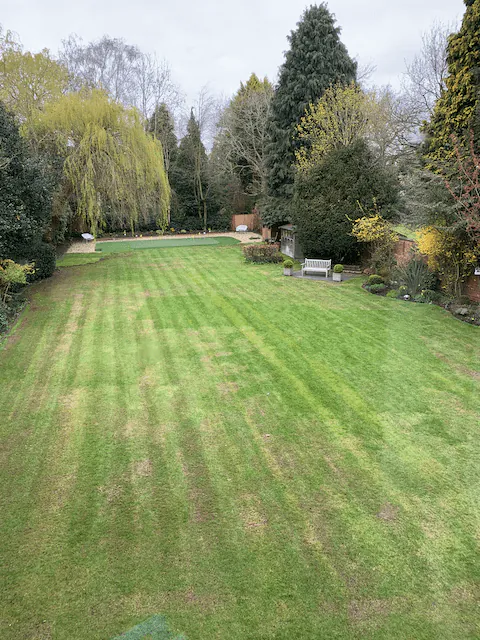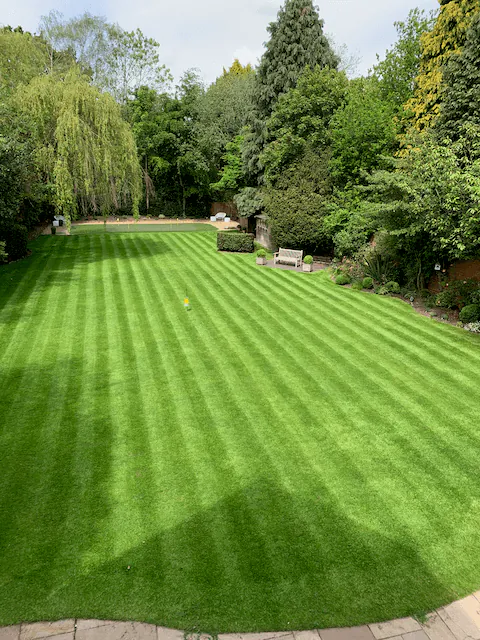We accept:
How to get a Wimbledon worthy lawn

It’s the season of strawberries and cream, lazy afternoons watching tennis and staring at the screen wishing your lawn looked like a Wimbledon tennis court.
Greenkeepers at Wimbledon work all year round to ensure the court is in pitch-perfect conditions, but you can achieve those iconic and meticulously mown stripes on your own lawn by using the correct grass seed, and by following these steps or sets, shall we say!
Set 1: Use a quick release fertiliser
Our QUICK RELEASE: Spring / Summer fertiliser gives a quick burst of life to your lawn and can really kickstart the growth of new seedlings as it is high in strength-building phosphate. Also rich in nitrogen, it makes your existing grass an envy-inducing emerald green whilst also protecting your lawn against drought.You can also use a fast-acting liquid fertiliser like our Make it Grow to boost your lawn's growth to help it thicken and recover after winter or heavy footfall. Similarly, our Make it Green enhances grass with a nutrient-dense feed to make it healthy and vibrantly green. These liquid fertilisers will show results in a matter of days - making them perfect for summer family gatherings and garden parties!Set 2: Sow a Wimbledon worthy lawn seed mix
We have multiple mixes that will give you that world-class Wimbledon look! If you want the real thing, it is said that the grass seed used on the Wimbledon courts is 100% perennial ryegrass – and it just so happens that we have a 100% perennial ryegrass mix, made up of 3 different cultivars to provide an ornamental lawn that is also hardwearing in the form of our Perform: Sports mix.Neil Stubley, Head of Courts and Horticulture at Wimbledon, has said that for domestic use, a blend of seeds containing chewings fescue, strong and slender creeping red fescue, and browntop will also work well.Funnily enough, we have those mixes too! Our PERFORM: Tees mix contains exactly that, and our STATEMENT: Front Lawn mix is 100% fescue with three different cultivars. If you want those iconic Wimbledon stripes but not the high maintenance, our SUPERSTAR: Back Lawn is a great alternative - just look at these results!Set 3: Mow meticulously and stripe for success!
Players at Wimbledon may be well used to an 8mm lawn, but for us at home, it may be a little bit too short! For an ornamental lawn, the ideal mowing height is 25-40mm; this helps to protect the lawn from drought during the warmer months, as the longer blades retain the water.The courts at Wimbledon are mown three times a week, but we suggest that you mow the grass when it reaches around 30mm to maintain the 25mm and give it adequate time to grow again.As a general rule, new seedlings should be mown when they reach around 5-7cm – this means they have grown well enough and are established to get their first cut without being damaged.To get those statement stripes, make sure to use a rotary mower that has a rear roller. Stripes are actually made by how far you bend the grass and show up as different colours due to the reflection of the light. Use a fence as your guide for starting your stripes, heading in one direction and turning back in the opposite direction to create that stunning stripe effect.One of our happy customers, Matthew Orme, decided to treat us with some before and after pictures of his lawn. The before image shows a patchy lawn that wasn't exactly pitch-perfect!Case Study: Before & After sowing SUPERSTAR: Back Lawn grass seed
After sowing SUPERSTAR: Back Lawn, Matthew's garden is ready for a few rounds of tennis or a few summer drinks! You can imagine Steffi Graf and Martina Navratilova hitting backhands and drop shots out there.
